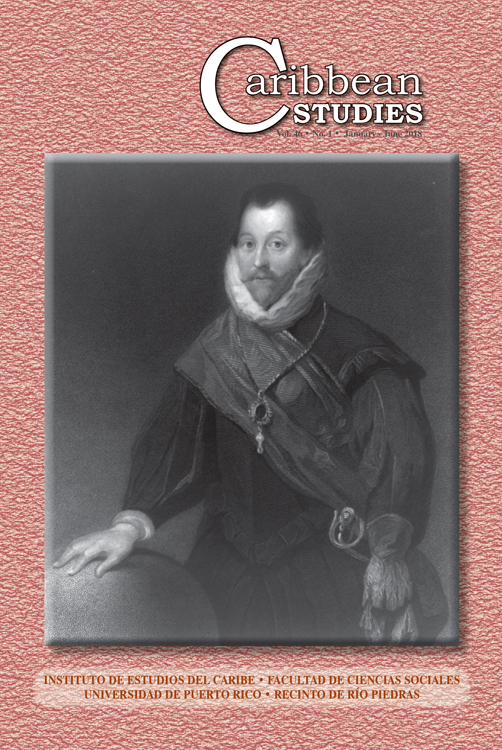Abstract
In the context of human development, the identification and measurement of poverty play a central role. Within this context, this article presents a review of various poverty measures estimated for Puerto Rico. Poverty in Puerto Rico is assessed in light of current public policies. Using a family of indicators based on Sen’s teachings, and designed for a more scrupulous identification of the poor Puerto Rican, there is evidence suggesting that poverty on the Island takes a positive trend at the end of the past decade. Contrary to trends in other developed countries, Puerto Rico has witnessed a deepening of poverty, particularly for young people and middle education groups. The deterioration of the labor market and current demographic changes in the Island contribute to poverty intensification for some groups more than others. Among the most affected are women, who comprise 54% of the poor population, those under 18 years of age and those living in households headed by wome
References
Alkire, S., & J. Foster.(2007, revisado en 2008). “Counting and Multidimensional Poverty Measurement.” OPHI Working Paper 7.
Anand, S., & A. Sen. 1999. “Concepts of Human Development and Poverty: A Multidimensional Perspective.” Pp. 1-19 en Poverty and Human Development. Human Develpment Report Office.
Citros, C., & R. Michael, eds. 1995. Measuring Poverty: A New Approach. Washington, DC: National Academy Press. Accesado junio 2014 <https://www.census.gov/hhes/povmeas/methodology/nas/report.html>.
Departamento del Trabajo y Recursos Humanos de Puerto Rico. 2016. Información del mercado laboral de Puerto Rico: Tablas estadísticas. Obtenido de <http://www.mercadolaboral.pr.gov/Tablas_Estadisticas/ Fuerza_Trabajadora/T_Serie_Historica.aspx>.
Fields, G. 2001. Distribution and Development: A New Look at the Development World. New York: Russell Sage Foundation.
Fisher, G. 1997. “The Development and History of the U.S. Poverty Thresholds.”
Newsletter of the Government Statistics Section and the Social Statistics Section of the American Statistical Association, págs. 6-7. Recuperado junio de 2014 <http://aspe.hhs.gov/poverty/papers/hptgssiv.htm>.
Foster, J. 1998. “Absolute versus Relative Poverty.” The American Economic Review, Papers and Proceedings of the Hundred and Tenth Annual Meeting of the American Economic Association 88(2):335-342.
Foster, J., J. Greer, & E. Thorbecke. 1984. “A Class of Descomposable Poverty Measures.” Econometrica 52(3):761-766.
Ruggles, S.A., K. Genadek, R. Goeken, M.B. Schroeder, & M. Sobek. 2010.
Integrated Public Use Microdata Series: Version 5.0 [Machine-readable database]. Minneapolis.
Sen, A. 1976. “Poverty: An Ordinal Approach to Measurement.” Econometrica 44(2):219-231.
———. 1979. “Issues in the Measurement of Poverty.” Pp. 285-307 en The Scandinavian Journal of Economics 81(2)
———. 1983. “Poor, Relatively Speaking.” Oxford Economic Papers, New Series 35(2):153-169.
———. 1990. “Development as a Capability Expansion.” En Human Development and the International Development Strategy for the 1990’s, editado por K. Griffin & J. Knight. London: McMillan.
———. 2000. Development as Freedom. New York: Anchor Books.
———. 2008. “Capability and Well-Being.” Pp. 270-285 en The Philosophy of Economics: An Anthology, editado por D. Hausman. Cambridge University Press.
Smeeding, T. 2014. “Poverty Measurement.” En The Oxford Handbook of Poverty and Society, editado por D. Brady & L. Burton. Oxford University Press.
Sojo, C. 2000. “Dinámica sociopolítica y cultural de la exclusión social”. En Exclusión social y reducción de la pobreza en América Latina y el Caribe, editado por C. Sojo, E. Gacitúa & S. Davis. San José: Banco Mundial/ FLACSO.
Sotomayor, O. 2004. “Development and Income Distribution: The Case of Puerto Rico.” World Development 32(8):1395-1406.

